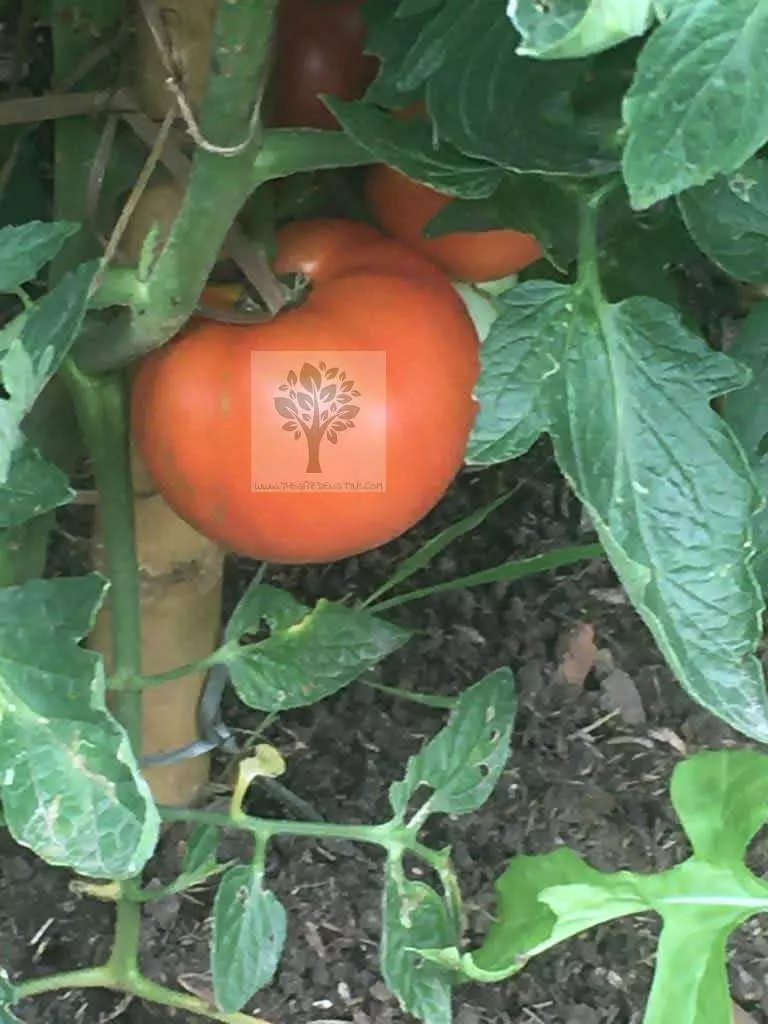Like any plant, we must know the corresponding steps for its care, and what to do and what not to do, to give the proper treatment to our tomato plant, but first, we must detail the objectives of regular pruning. Among the main objectives of pruning the tomato plant is to allow the proper growth of the fruits, preventing the plant from using resources (water, sun, and nutrient fertilizer) to grow only in its main stem. In this article, we show you how to prune tomato plants for maximum yield and when it is more convenient to prune tomato plants.
Once we have our tomato plants in the ground and they start to grow it is important to do good pruning to have larger and better-developed fruits, avoiding loss of energy in creating new shoots and leaves. Continue reading to learn how to prune tomato plants.
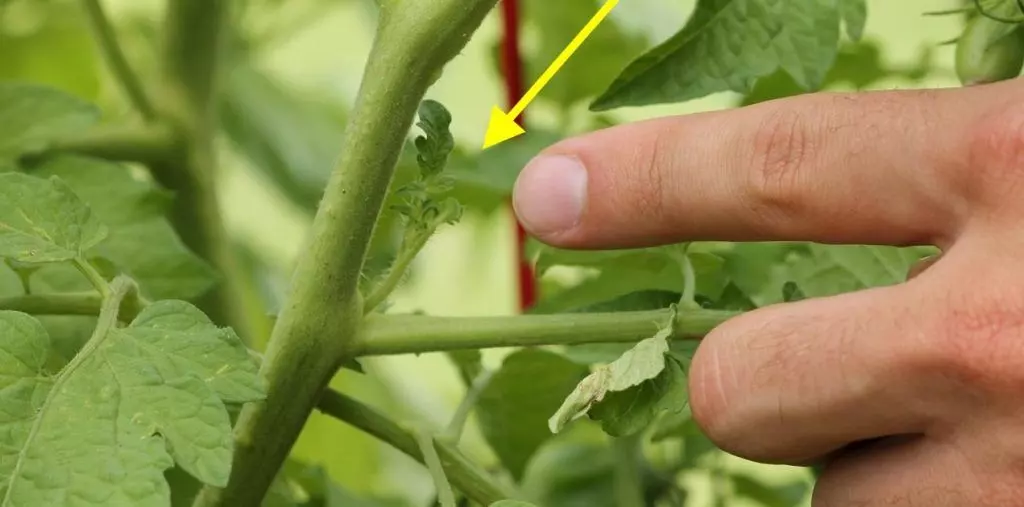
Table of Contents
How to Prune Tomato Plants for Maximum Yield – Step-by-Step
Pruning tomatoes becomes straightforward when following these instructions:
1- First we have to decide if we want 1, 2, or 3 branches on each plant. This will depend on whether we want them to occupy a circular space each one if we want them to be in a line or furrow with the rest of the plants, or furrows wide enough to allow the plants to grow without getting in each other’s way. The same would apply to pots according to the space we have on our balcony or terrace.
2- Once we have decided on the number of branches, we will eliminate all the offshoots that appear in the axils of the leaves, between the insertion of the leaf and the stem. We will do this periodically and thus we will have stronger and more aerated plants.
3- Depending on the quality of the soil of our orchard and its preparation, pruning will be done by cutting the branch when it has two or three flowering buds. Every 15 days you can check and give the cuts, always with the plant dry to avoid fungus problems.
4- If we do not want the tomato plants to exceed a certain height because we don’t want to stake them or because they shade other plants, we will cut them at the predetermined height every 2 weeks, and always when the plant reaches that size.
5- There are cases and areas where plants are kept producing for a long time and can be trained and trellised by having the new tomatoes further and further away from the base of the plant until the end of the cycle. This is another way to take advantage of little soil space and have more production.
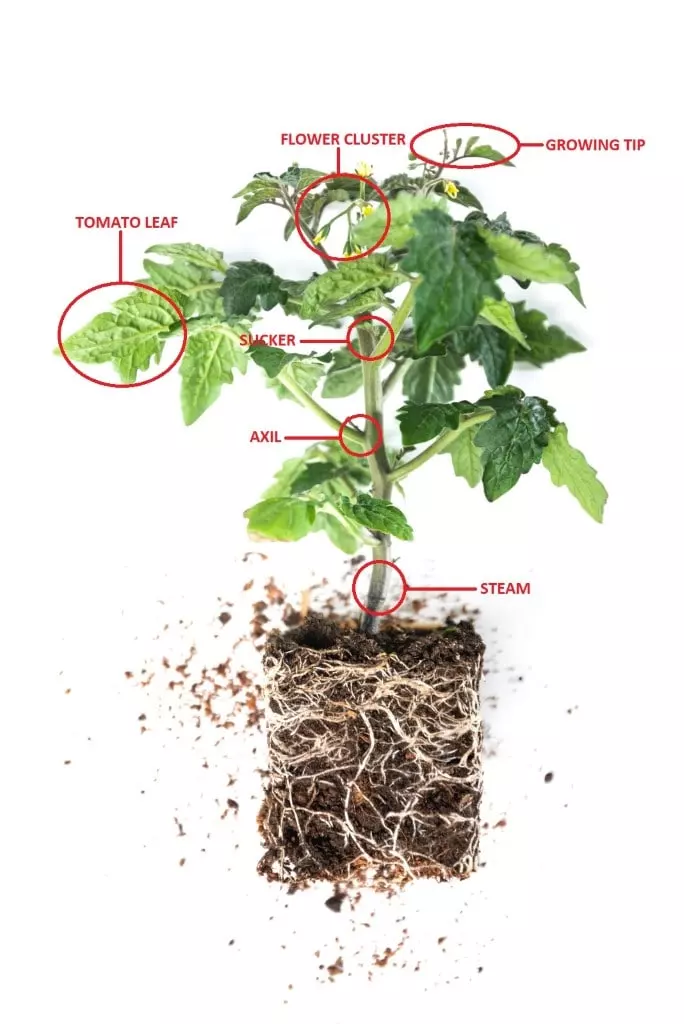
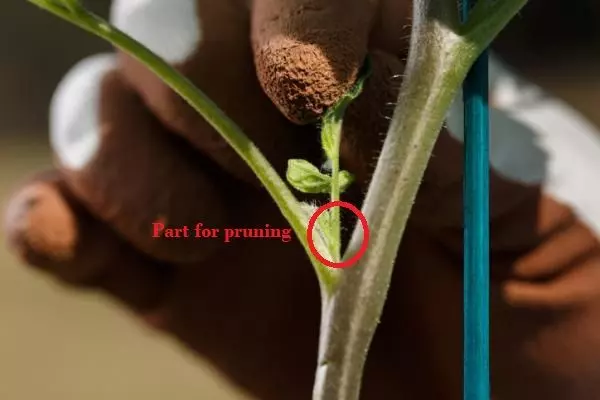
How To Prune Tomato Plants for Maximum Yield and When It Is More Convenient To Prune Tomato Plants
Let’s review how to prune tomato plants and when it is more convenient to prune tomato plants. In the following paragraphs, you will find a detailed step-by-step on how to prune tomato plants during the different stages. Also, we discuss why to prune tomato plants for maximum yield and their benefits.
It should be noted that this plant has a main stem, from which the secondary stems are detached, and it is in the middle of these that the fruits or tomatoes are born. By pruning several of these secondary stems, the plant will focus its resources on these fruits.
Another objective of pruning tomato plants is to avoid our plant, having so many stems, beginning to fall, or wither without bearing fruit, for which we must be in constant observation and care.
Like any plant, tomato plants need the necessary care so that their fruits can be enjoyed by the farmer and consumers, being the pruning of this plant is one of the most important processes that we will detail below for its learning and application.
When Should I Prune Tomato Plants?
Prune tomato plants early in the morning, when the foliage is driest. Avoid pruning wet plants; allow any moisture from rain, dew, or sprinklers to evaporate before trimming. Pruning wet plants can spread fungal diseases.
Monitor suckers closely and prune when they reach 2 to 4 inches (5-10 cm) in length. This prevents unwanted stems from diverting energy and nutrients away from developing fruits. Catching suckers when still small and tender makes pruning very quick as well.
Indeterminate tomato varieties require light, ongoing pruning every couple of weeks throughout the growing season. These vigorous plants will continue growing new stems and leaves all summer long if left unpruned. Staying on top of frequent pruning sessions keeps the plants tidy, directs energy to fruits, and allows sunlight and air to reach all parts of the plant.
How To Prune Tomato Plants for Maximum Yield
To prune tomato plants, we simply need pruning shears, previously disinfected with alcohol, and gloves. There are different types of pruning depending on what we want to achieve, let’s see them.
When starting to prune tomato plants observation is paramount detailing the main stem, starting from the growth of the plant, and cutting the small shoots that are coming out successively. The best thing to do is to remove them when they come out, to avoid damaging the structure.
Another way of pruning is to remove the leaves and shoots in an ascending way, that is to say from the bottom upwards, in this way the fruits will be visible and will have better color, making it easier for the plant to receive more sunlight.
Recommended reading: How to Clean Pruning Shears: Maintain Your Garden Tools
Why Prune Tomato Plants?
Pruning is not mandatory for tomato plants, but some gardeners choose to prune for enhanced production. If you opt to prune, ensure your tomatoes are indeterminate varieties, continuously growing throughout the season and potentially benefiting from regular upkeep. This practice is particularly useful for controlling size, especially in container plants. Pruning facilitates optimal sunlight exposure to all leaves, eliminates ground-level foliage in contact with damp soil, and prevents constant shading. By redirecting the plant’s energy towards fruit development, pruning encourages a more fruitful outcome.
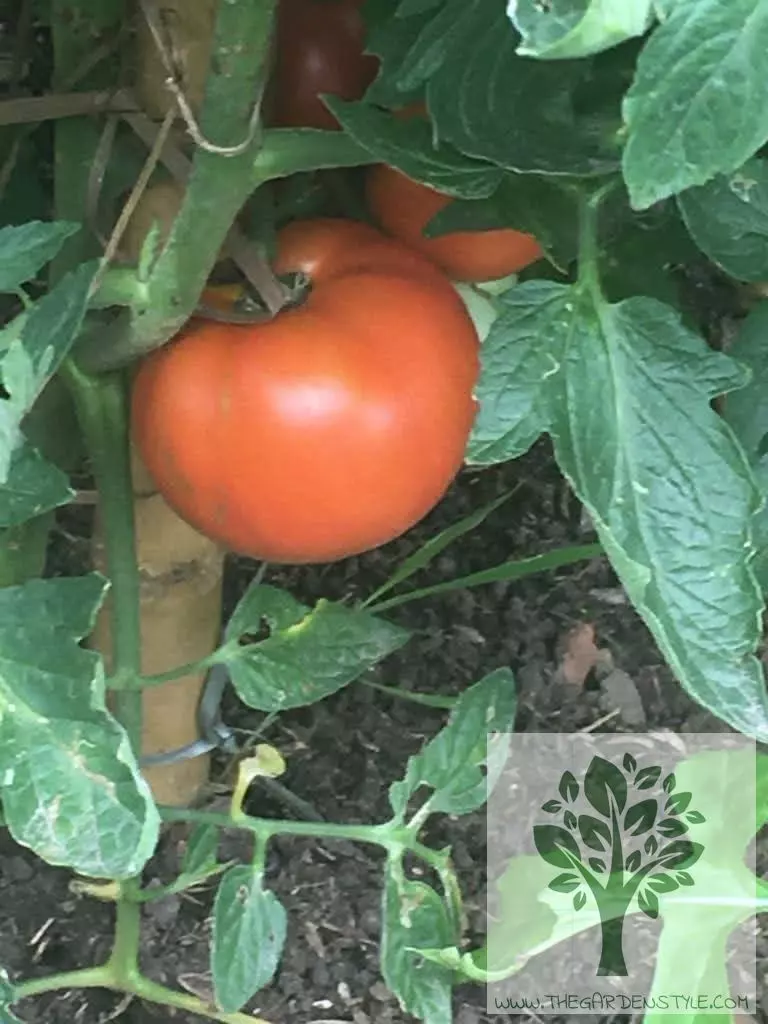
How To Prune Tomato Plants: Leaf Pruning and Shoot Pruning
Let’s see the leaf and shoot pruning and why prune tomato plants. Leaf pruning consists of removing the oldest or damaged leaves from the lower part of the plant. This practice will provide greater ventilation, uniformity, and coloration of the fruit.
Shoot pruning is based on removing the shoots (usually called offshoots). Offshoots appear in the axillary part of the stem.
In both cases, pruning should be done at the right time and frequency. It is recommended to cut the shoot when it is about 1.5” (5 cm) long. If the sprout is allowed to grow too much, the risk of disease will increase when it is cut.
Sometimes we can take advantage of the offshoots that we have cut to obtain a new tomato plant. We simply have to plant the offshoot, and you will see how in a few days it takes root.
With good care, in two to three years a large vine can be formed that not only provides shade in summer but also allows you to enjoy its delicious fruits.
The vine is the name given to the vine plant that is allowed to grow on vertical support. According to the taste and needs of the grower, it can be simply supported on a wall. Or it can be entangled in a framework that could have the dual purpose of providing shade to some area of the garden.
One of the most important cares to obtain a healthy and productive vine is to prune its leaves and fruits properly. Pruning should be done following certain guidelines and at certain times of the year, carefully but without fear: practice makes perfect.
The truth is that pruning in general in gardening is used to manipulate nature to the taste of the farmer, giving the necessary shape for its purpose or artistic reasons. In the case of the vine, pruning is done for practical purposes: proper pruning makes it possible for the vine to give better, bigger, and juicier fruit.
Types of Tomato Plants
Before picking up the pruners, it’s essential to identify your tomato plant variety. Pruning needs differ greatly between the two primary types – determinate and indeterminate.
Determinate Tomato Plant
Determinate tomato varieties are bred to reach a compact, bushy form ranging from 2-4 feet (60-120 cm) tall. Their vegetation and root systems naturally halt growth once fruit sets appear on terminal buds. As they focus energy on ripening existing fruits, determinate types require minimal pruning – mainly for shaping if desired.
Indeterminate Tomato Plant
Alternately, indeterminate tomatoes continue expanding vegetation and roots indefinitely unless frost concludes the season. These tomato plants flourish into tall-growing, vining plants up to 10 feet (3 m) tall when supported. Left alone, indeterminate tomato plants channel most energy into leaf and stem development at the expense of fruiting success. Strategic pruning is key for redirecting their habits toward fruit production.
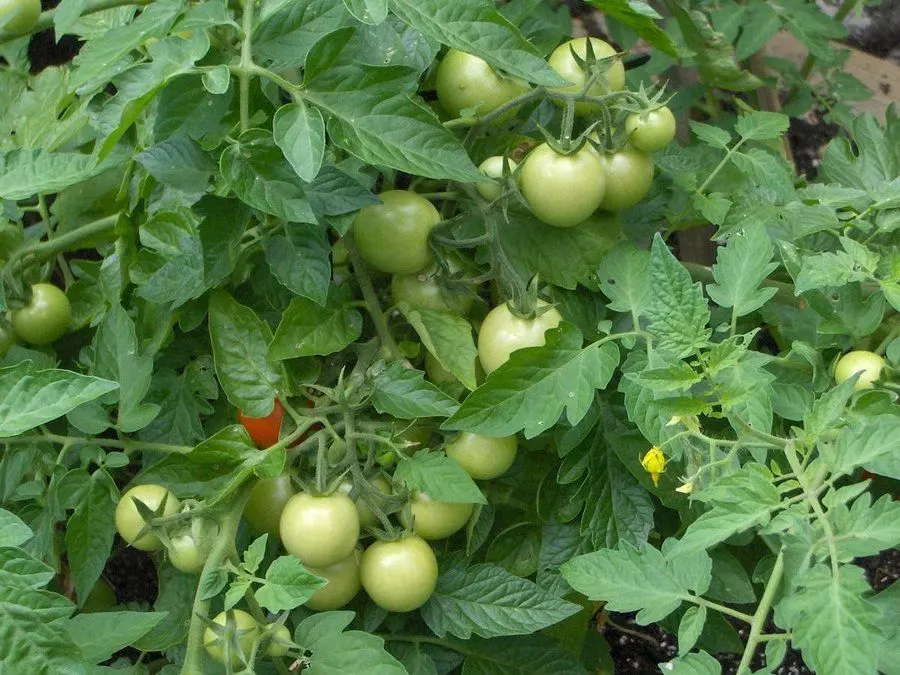
Caring Tips After Pruning Tomato Plants
Pruning tomato plants is a common practice to promote better airflow, manage plant size, and improve fruit production. After pruning, it’s important to take proper care of the plants to ensure they recover well and continue to thrive. Here are some caring tips after pruning tomato plants:
Watering: Water the plants thoroughly after pruning to help them recover from the stress of the process. Maintain consistent watering throughout the growing season. Tomatoes generally prefer even moisture, so avoid letting the soil dry out completely between waterings.
Fertilizing: Apply a balanced fertilizer for tomatoes to provide essential nutrients for the plants. Look for a fertilizer with a balanced N-P-K ratio (nitrogen, phosphorus, potassium). Consider using a fertilizer high in phosphorus to encourage flowering and fruit development.
Common Tomato Pruning Mistakes
Common mistakes in tomato pruning:
- Overpruning: Avoid removing excessive foliage to prevent stress on the plant.
- Late Pruning: Prune during active growth to avoid disrupting the plant’s cycle.
- Improper Tool Use: Use sharp, suitable tools to ensure clean cuts and minimize stress.
- Neglecting Sterilization: Sterilize tools between plants to prevent disease transmission.
- Removing Main Stems: Keep main stems intact for structural integrity and productivity.
- Ignoring Suckers: Remove suckers to prevent overcrowding and enhance airflow.
- Harsh Pruning in Early Growth Stages: Gradually prune early to avoid hindering plant development.
- Failure to Support Pruned Plants: Provide support for pruned plants, especially when heavy with fruit.
